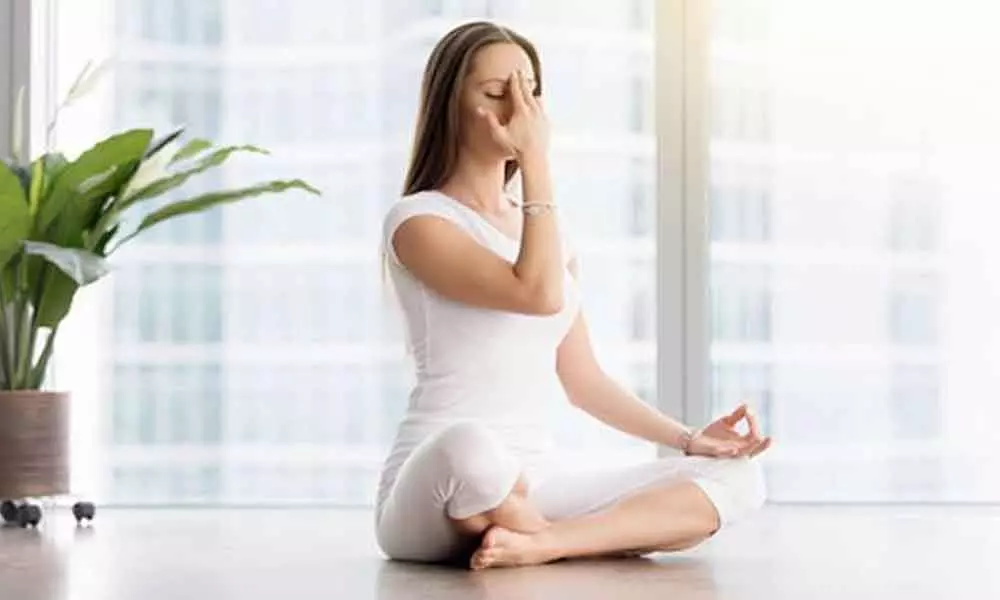Powering inner core breath-by-breath

Powering inner core breath-by-breath
90% of the energy we need comes from the oxygen we breathe
If there was ever a time to give a thought about breathing, it is now. The Covid-19 pandemic has made everyone to take notice of what we all had taken it for granted - breathing, the very essence of life. 90 per cent of the energy we need comes from the oxygen in the air we breathe, unlike the popular belief that food is main source of energy in the body.
Yogis, medical practioners, gurus and learned men have been talking about the importance of breathing for ages, but only now people are listening and understanding the science behind it. During lockdown, the maximum posts including information, talks and videos shared on social media were the benefits of breathing.
Divya Kanchibhotla, Executive Director, Sri Sri Institute for Advanced Research, says that the ancient knowledge systems of yoga, Tai Chi and QiGong have been built on this powerful connect between the breathing and mind. "The techniques of Pranayama modulate the breath.
With several techniques that involve holding breath, slow and longer exhalations, the mind becomes calm and the body is relaxed and energised. Scientific studies have shown that deep abdominal breathing activates the vagus nerve and the parasympathetic nervous system," she says, adding, breathing techniques like Sudarshan Kriya, taught by the Art of Living have been linked to reduction in anxiety, stress and depression and increase in satisfaction with life and happiness.
Vani Bala, media coordinator, Art of Living, explains that pranayama enhances harmony between seven levels of existence that include body, breath, mind, intellect, memory, ego and self, resulting in peace of mind.
"Whoever practices the breathing techniques regularly will have higher energy levels and will be able to cope up with negative emotions. This helps a person to respond to any kind of situation rather than reacting to it."
"Meditation should be made an integral part of life. It acts as a silent regulator for all systems in our being -- physical, mental, emotional and spiritual -- to function in harmony. The impact of this is the ability of the body and mind to respond to internal and external stress with extreme effectiveness," says Kamlesh Patel, a guide at Heartfulness Meditation.
Mallikarjun Reddy, yoga instructor, Hyderabad Central University, says that regular practice of meditation reduces stress levels. "The mantra is simple yet profound. All that one needs to do is dedicate some time for the practice daily. You can sit in any posture and observe your breath by closing your eyes. You get a bundle of thoughts pouring in fluctuating your breathing pattern.
You may also feel various parts of your body start aching during the practice. But, don't give up and witness all the things happening in you and you will find yourself having slow and deep breath.
This is the stage where your mind becomes calm and feel good hormones are released making you elated. When you are happy, stress related diseases get cured automatically," he explains.

